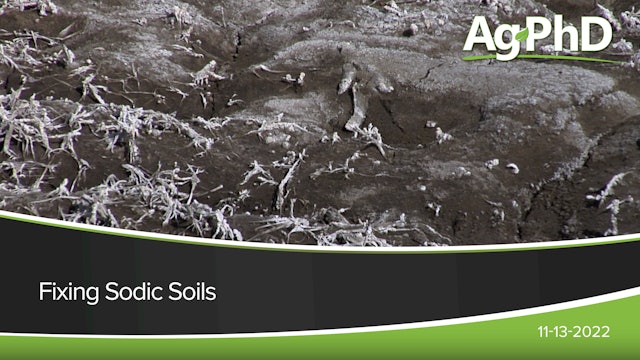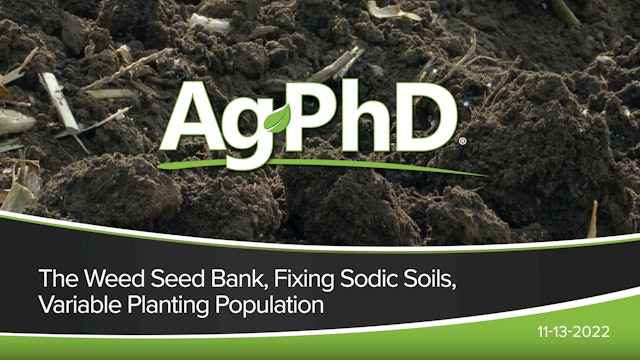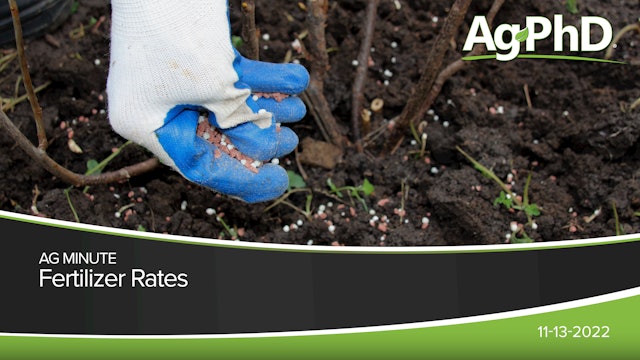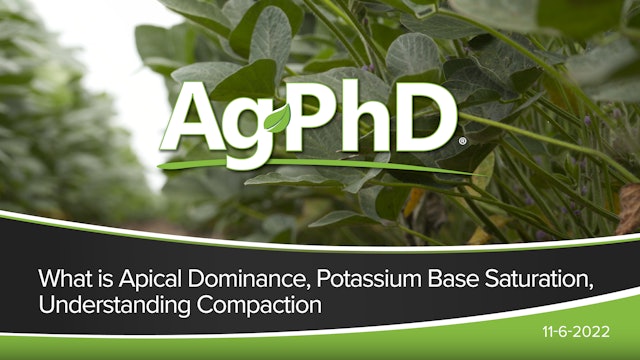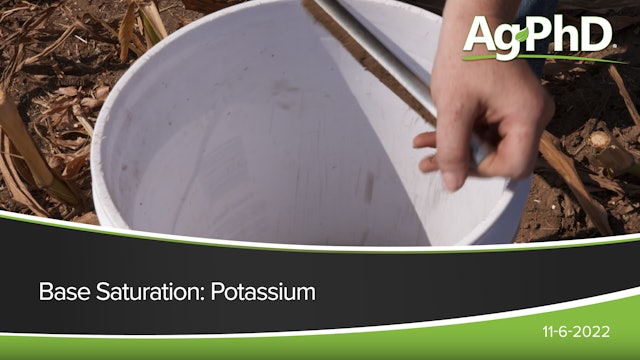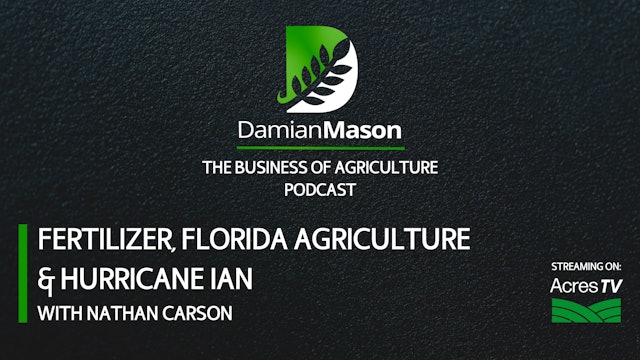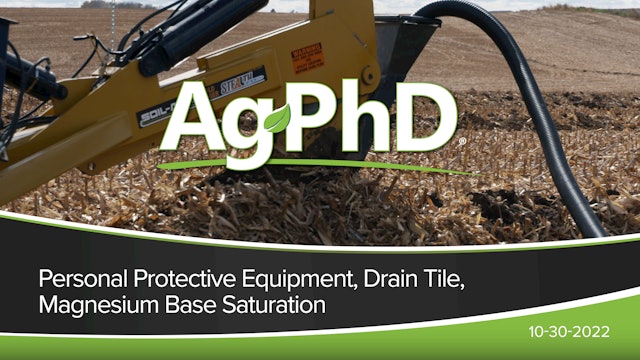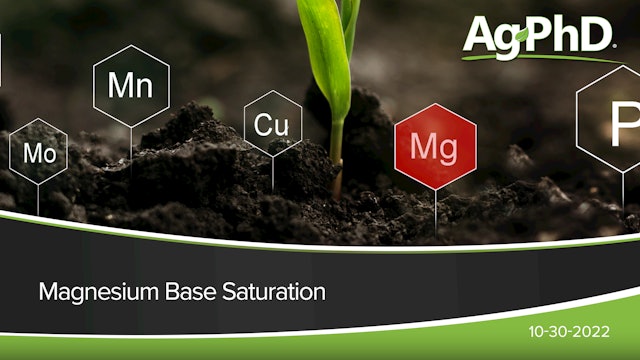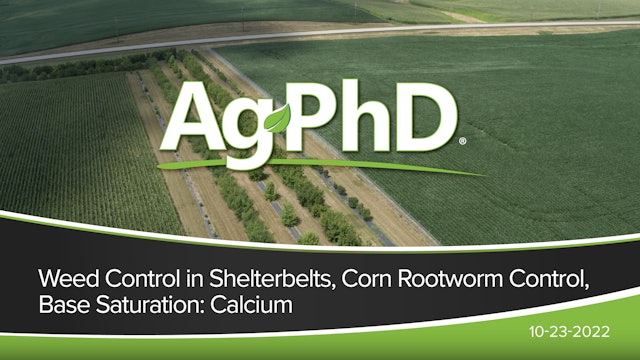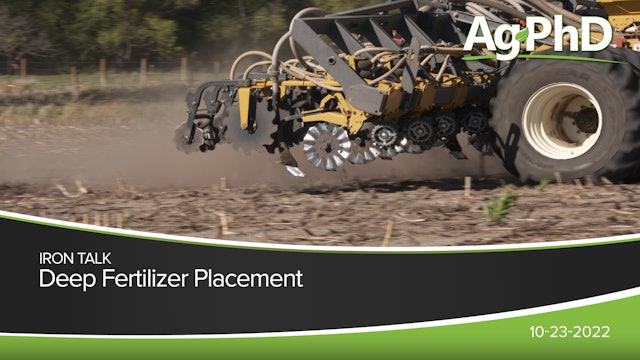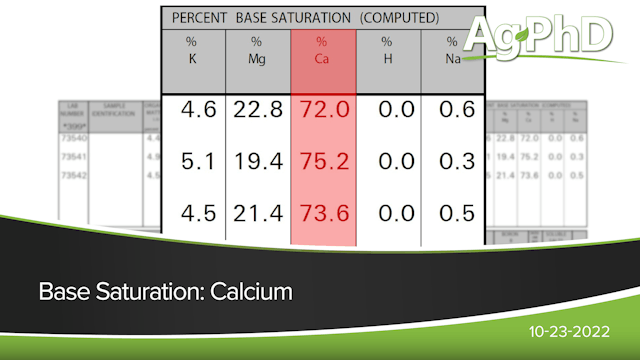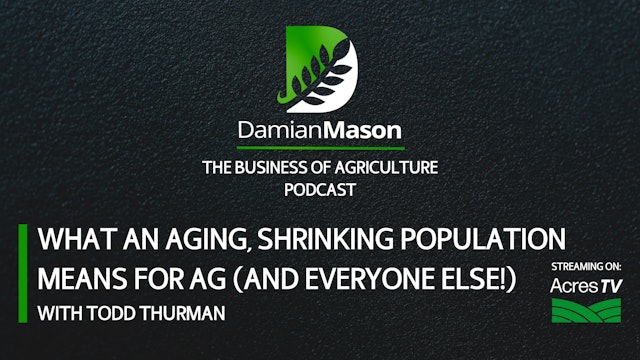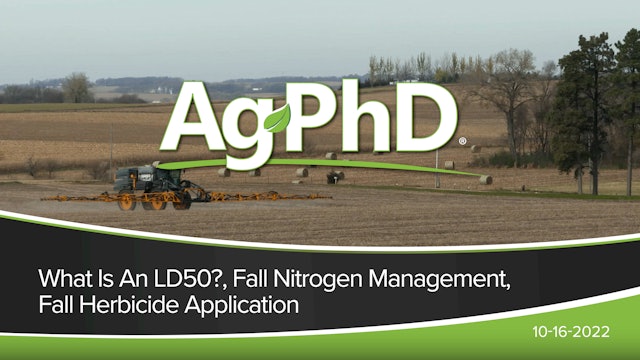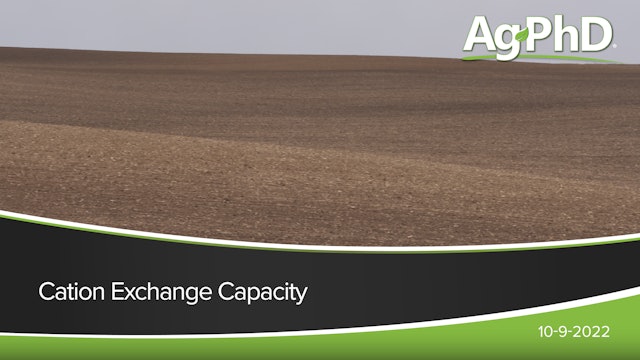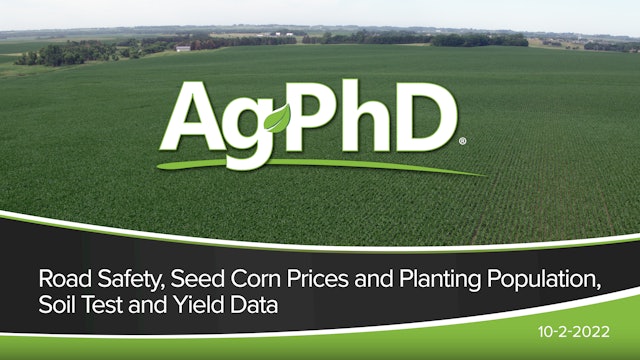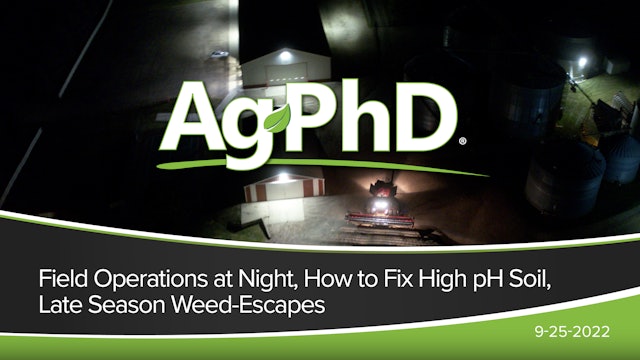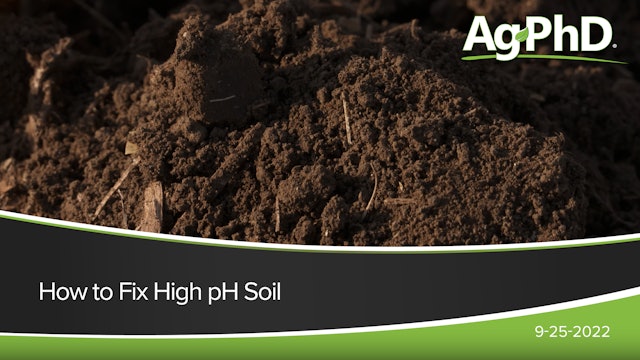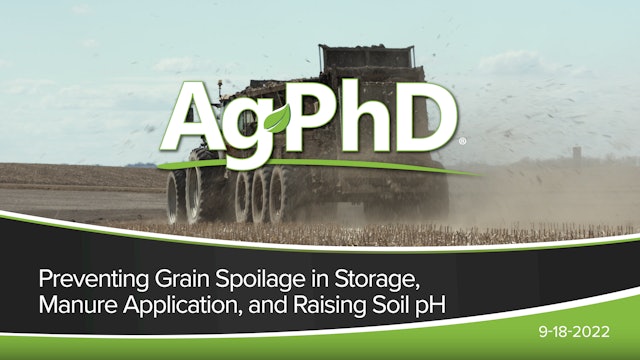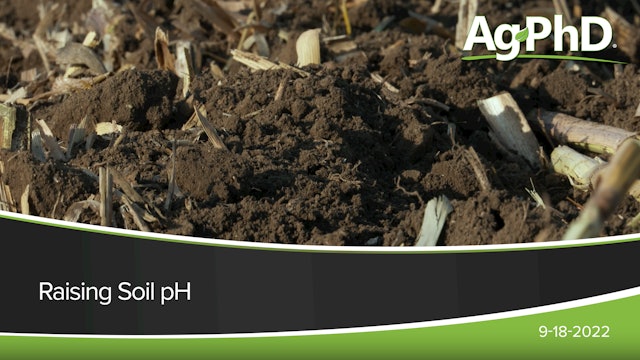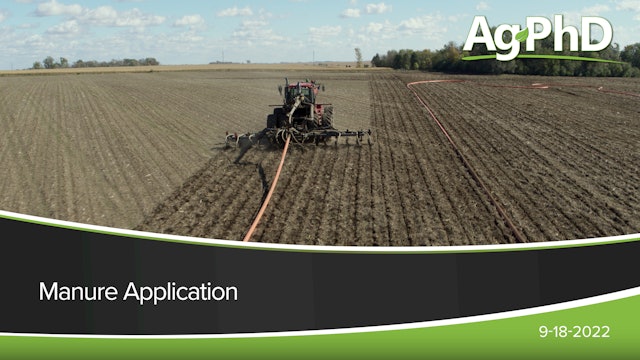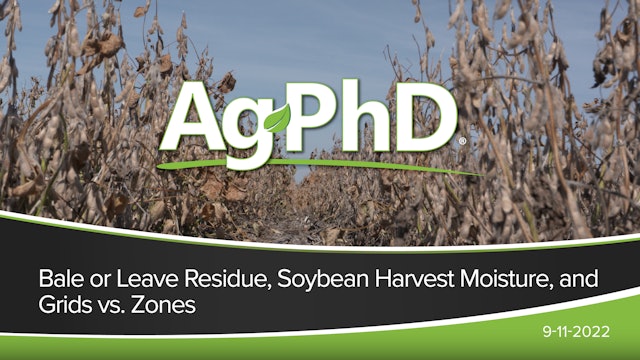Fertility
Crops don’t grow well without ample plant food, and fertility is the biggest recurring expense on any farm. Finding the best and most cost-effective ways to meet the fertility needs of your crops will help them thrive all season long and build better yields at harvest.
-
Fixing Sodic Soils | Ag PhD
Brian and Darren discuss the challenges of having too much sodium in your soils.
-
The Weed Seed Bank, Fixing Sodic Soils, Variable Planting Population | Ag PhD
Brian and Darren discuss the continuous fight against weeds, how to fix soils that have too much sodium, and how to decide if you should increase or decrease planting populations in corn, soybeans, and wheat.
-
Fertilizer Rates | Ag PhD
Darren Hefty explains how farmers decide how much fertilizer to apply to their crops.
-
Apical Dominance, Base Saturation: Potassium, Understand Soil Compaction| Ag PhD
What happens if you lose the top growing point in a plant? What is the perfect percentage for K with other nutrients? And how can you manage compacted soils on the farm? Plus henbit and post-harvest checklists.
-
Base Saturation: Potassium | Ag PhD
K is an unmovable nutrient that needs to be in balance with the other elements in your soil. When used at the optimum percentage, potassium can give you the best stalks, plant health, and yields.
-
Fertilizer, Florida Agriculture & Hurricane Ian | Damian Mason
Fertilizer markets have been tumultuous for a few years now. Just when you thought things had settled down on fertilizer price and availability, a hurricane hit, a war broke out, and the Mississippi dried up. Nathan Carson is VP of Operations with Chemical Dynamics, a Florida specialty fertilizer...
-
Personal Protective Equipment, Drain Tile, Magnesium Base Saturation | Ag PhD
The Hefty brothers talk about staying safe by using PPE or personal protective equipment, the benefits of installing drain tile, and how to manage your magnesium levels in your soils.
-
Magnesium Base Saturation | Ag PhD
Brian and Darren Hefty explain various issues you may have if you have too much magnesium in your soils.
-
Weed Control in Shelterbelts, Corn Rootworm Control, Base Saturation: Calcium
What's the best way to fight weeds in your trees, what are Brian & Darren's 3 steps to rootworm control, and what's the best number for calcium in your soil? Plus we talk marestail and deep fertilizer placement in today's show.
-
Deep Fertilizer Placement | Ag PhD
Putting fertilizer 10-16 inches into your soil has several benefits says Darren Hefty. Fall is the best time to drop your shanks in your fields.
-
Base Saturation: Calcium | Ag PhD
Calcium may not be a major nutrient, but it's the most important one for building and maintaining your soil. Brian and Darren talk about getting your Ca in balance with K, Mg, H, and Na.
-
What an Aging/Shrinking Population Means for Ag (& Everyone!) | Damian Mason
The global population is getting older and fertility rates have been plummeting. Unless you follow my commentary, this is probably news to you. Most everyone in Ag is still operating under the misguided assumption that population growth is boundless. It’s not. As fertility rates drop like a rock,...
-
What Is An LD50?, Fall Nitrogen Management, Fall Herbicide Application | Ag PhD
Learn about safety by understanding the LD50 of various products, how to successfully apply nitrogen in the fall, and how to control weeds better by spraying after harvest.
-
Fall Nitrogen Management | Ag PhD
Should you apply nitrogen in the fall? Brian and Darren Hefty share some tips on a successful nitrogen program.
-
Farm Trash, Strip-Till Suggestions, Cation Exchange Capacity | Ag PhD
How heavy is your soil, why don't we bury trash in farmyards anymore, and what wonderful soil-prep is between no-till & conventional tillage? Plus Brian & Darren talk field pennycress control and lime applications.
-
Cation Exchange Capacity | Ag PhD
Exactly how heavy or light is your soil? Getting CEC results in your soil test is necessary before you do many jobs on that field.
-
Road Safety, Seed Corn Prices, Soil Test & Yield Data | Ag PhD
Brian and Darren discuss sharing the road with farm equipment, cutting planting populations when seed corn prices are higher, and how to improve your fertility program by matching your soil test data with your yield data.
-
Soil Test and Yield Data | Ag PhD
See how you can improve your fertility program by matching your soil test data to your yield data.
-
Field Operations at Night, Fix High pH Soil, Late Season Weed-Escapes | Ag PhD
Yes you can drop your high soil pH, Brian and Darren Hefty have many solutions to help you achieve the ideal balance! Plus they talk night-farming, end of season weeds, drain tile maintenance, and black nightshade control.
-
How to Fix High pH Soil | Ag PhD
Brian and Darren tell you the many ways you can drop your pH from an 8 to a 6.5.
-
Prevent Grain Spoilage in Storage, Manure Application, Raising Soil pH | Ag PhD
The Hefty brothers talk about keeping grain from spoiling in storage, how to best manage manure application, and how to test for and correct low soil pH.
-
Raising Soil pH | Ag PhD
Learn about testing for low soil pH and correcting it with lime.
-
Manure Application | Ag PhD
The Hefty brothers discuss various considerations when applying manure to your fields.
-
Soybean Moisture, Grids vs. Zones, Baling Residue | Ag PhD
Brian & Darren Hefty discuss what is best to do with your corn residue, if it's better to harvest soybeans too wet or too dry, and if grids or zones are better for soil sampling maps. Plus there's cone bottom bins and dandelions in today's show.



